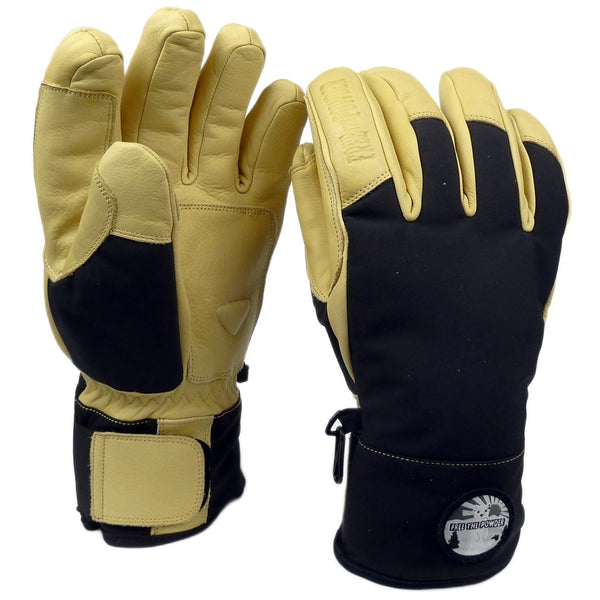Dexterity in ski gloves and mittens
Dexterity in gloves and mittens for skiing and snowboarding is a complicated issue, with lots of variables that steer buying decisions.
What set of glove design variables provide the best dexterity?

A super thin glove with maximum stretch and minimum insulation.
That’s not exactly the answer you were looking for in a ski glove, worn in the cold, with variable weather conditions.
So, the real question is what set of glove design variables provide the best dexterity without compromising too much warmth?
I often read glowing reviews of the dexterity of certain gloves, only to find that they have 40 grams of insulation or less -very light insulation. These type of winter work gloves are very common and are widely available at hardware stores, Home Depot and Walmart. Many ski glove companies utilize this strategy as well (with a hefty mark-up). These are very popular with Ski Patrol, and skiers and snowboarders with lower budgets. The real problem in my experience is that my hands just can’t handle the cold with these types of insulated gloves that maximize dexterity, while minimizing insulation levels.
So, what set of glove design variables provide the best dexterity AND are still very warm?
- Use of non-rigid materials that break in over time, stretch and conform to your hand’s unique shape and size.
- Leather, tanned and treated for maximum softness and grip. The surface of the palm is perhaps the most important variable. It has to be soft and grippy.
- Breathability: dry hands are essential for the best grip possible. When a glove is highly breathable, less insulation is needed, thereby increasing dexterity. “Water-proof” membranes are usually the culprit in decreasing breathability of a glove. The extra layer literally puts plastic between the liner and shell, and significantly decreasing moisture transfer. And it significantly adds bulk between layers.
- Thin, dense insulation that retains excellent warmth with around 200 grams of insulation. Lofty insulation make your hands feel like they’re floating inside the glove. And when compressed (gripping a ski pole or climbing tool), they lose their thermal dynamics. Compress the loft, compress the warmth. “Thin” insulation retains its warmth when compressed.
- Both long-cuff and short-cuff gloves can have excellent dexterity and grip, but short-cuff gloves that employ an over-sized hook & loop (Velcro) closure are best. The better the glove grips your wrist, the less the palm moves. Watch Major League baseball players regularly re-tighten the straps on their batting gloves. That is to maintain optimum grip and dexterity.
Free the Powder specializes in making highly dexterous gloves.


Learn more about ski gloves:
Why Free the Powder?
-
Premium Quality
We use the best quality leather and the most breathable materials in order to make the warmest and toughest ski gloves and mittens.
-
Superior Value
Why pay a triple digit markup for quality? We sell our premium leather ski gloves direct at lower prices than our competitors.
-
Free Fast Shipping
No one wants to wait for their order to ship. You'll get your gloves and mittens fast! We get your order out to you ASAP.
